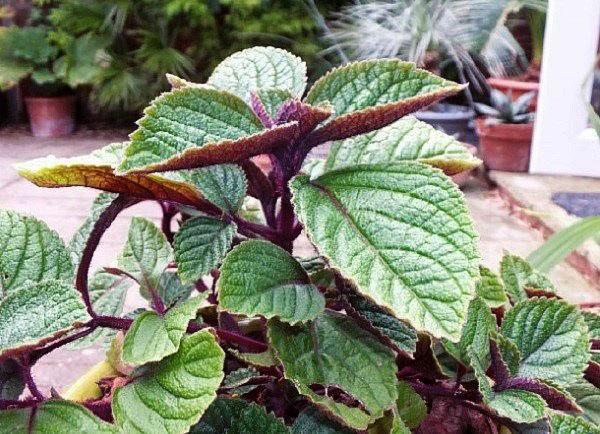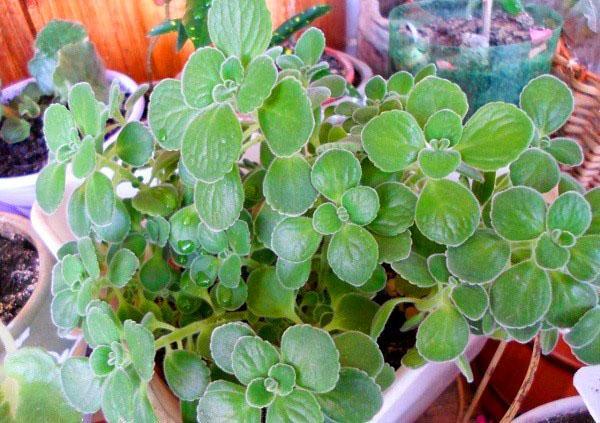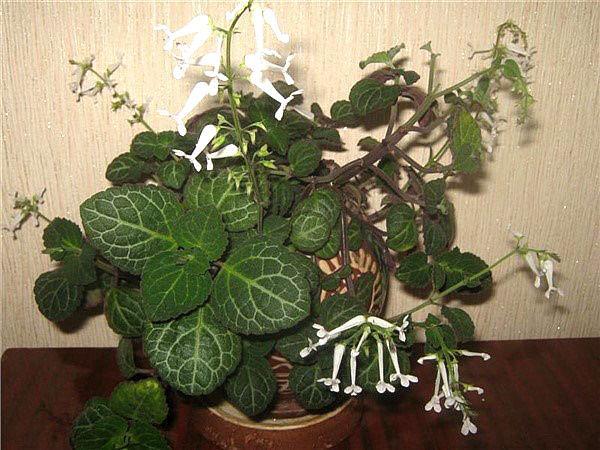Interesting facts about plectrantus
 Among decorative leafy indoor crops, the plectrantus plant is very popular among flower growers. It not only looks beautiful due to the interesting shape and color of the leaves, but it is also one of the most unpretentious flowers. Plectrantus calmly tolerates the missed watering if the owners suddenly forgot about it or unexpectedly left for a long time. In spite of everything, it grows rapidly and soon the small stalk turns into a gorgeous bush.
Among decorative leafy indoor crops, the plectrantus plant is very popular among flower growers. It not only looks beautiful due to the interesting shape and color of the leaves, but it is also one of the most unpretentious flowers. Plectrantus calmly tolerates the missed watering if the owners suddenly forgot about it or unexpectedly left for a long time. In spite of everything, it grows rapidly and soon the small stalk turns into a gorgeous bush.
Many popular beliefs are associated with this flower, while its reputation is well deserved. After all, the plant has medicinal properties with a fairly wide range of applications.
Varieties of plant name

 Due to the special structure of the inflorescences, in particular the corolla in the form of a spur, the flower is also called "cock's spur" or "spur flower". And the varieties, the smell of which scares away small insects, is popularly nicknamed "fly-eater".
Due to the special structure of the inflorescences, in particular the corolla in the form of a spur, the flower is also called "cock's spur" or "spur flower". And the varieties, the smell of which scares away small insects, is popularly nicknamed "fly-eater".
General description of appearance
 Plectrantus has several species, most of which are drooping, well leafy shoots hanging from the pot in large numbers. This makes it suitable for hanging planters or for creating cover beds. Lateral lashes of ampelous species can grow up to 1.5 m in length. There are also erect plant varieties that grow in the form of a bush up to 40 cm high.
Plectrantus has several species, most of which are drooping, well leafy shoots hanging from the pot in large numbers. This makes it suitable for hanging planters or for creating cover beds. Lateral lashes of ampelous species can grow up to 1.5 m in length. There are also erect plant varieties that grow in the form of a bush up to 40 cm high.
Almost all plant species have the same rounded leaf shape with an uneven toothed edge (except for the oaky plectranthus, in which they look like oak). But the surface and color of the deciduous plate is individual for each variety. These can be smooth or fluffy leaves, of a solid color or with a white border, matte or glossy.
 The leaves and shoots of the flower are able to accumulate and retain moisture for a long time, and therefore it is referred to as semi-succulents. The plant is covered with a deciduous cap all year round, it has a constant color and does not crumble.
The leaves and shoots of the flower are able to accumulate and retain moisture for a long time, and therefore it is referred to as semi-succulents. The plant is covered with a deciduous cap all year round, it has a constant color and does not crumble.
The main advantage of the plectrantus plant is its graceful decorative leaves, but it also blooms with small white-blue or purple inflorescences, similar to an umbrella. Many growers believe that the flowering of the plectrantus only spoils the appearance of the bush.
To prevent the flowers from taking away extra juices from ivy, it is advised to remove them before blooming.
Possible difficulties in growing a flower
 Despite its simple nature, when grown in room conditions, plectrantus can be affected pests and diseases, because not a single flower is immune from this.
Despite its simple nature, when grown in room conditions, plectrantus can be affected pests and diseases, because not a single flower is immune from this.
The plant has stable immunity for most diseases, however, lesions are possible:
- Downy mildew. A sign of the disease is gray spots on the surface of a leafy plate, and the cause is waterlogging of the soil. First of all, the earthen who should be allowed to dry well, and further reduce the frequency of watering.It is good to spray the bush itself with an aqueous solution based on serum, consisting of 3 parts water and 1 part serum. You can also use special store drugs.
- Root rot. The causes of the appearance of the disease and the methods of processing the bush are similar to the fight against downy mildew.
In addition, plectrantus is able to lose its decorative effect as a result of:
- exposure to direct sunlight - leaves discolor and fade;
- prolonged drying out of the soil - the bush withers;
- excess watering - the leaves begin to turn yellow and fall off, rotting of the root system is also possible.
As for pests, sometimes the plectrantus is attacked:
- spider mite;
- scabbards;
- whitefly;
- aphids.
The reason for their appearance is too dry air in the room or infected plants in the vicinity. In most cases of pest infestation, the leaves of the bark flower are covered with a sticky bloom. To get rid of uninvited guests, the flower must be treated with insecticides. Varieties with smooth leaf surfaces can be sprayed with soapy water.
Both beautiful and useful
 Plectrantus is used not only to decorate the interior - the aroma emitted by it purifies the air in the room. The scent of mint helps with headaches and soothes the nerves. But what is good for a person is not very pleasant to the harmful inhabitants of cabinets and pests of woolen carpets. It is noticed that the moth prefers to avoid rooms in which there is a flowerpot with a flower, and cloth bags with leaves placed in a closet will save a fur coat from it.
Plectrantus is used not only to decorate the interior - the aroma emitted by it purifies the air in the room. The scent of mint helps with headaches and soothes the nerves. But what is good for a person is not very pleasant to the harmful inhabitants of cabinets and pests of woolen carpets. It is noticed that the moth prefers to avoid rooms in which there is a flowerpot with a flower, and cloth bags with leaves placed in a closet will save a fur coat from it.
The beneficial properties of plectrantus are widely used for medical purposes.
Crushed plectrantus leaves, applied to the bite site by small insects, will help to quickly relieve itching and relieve irritation.
Whole leaves dipped in boiled (cooled) vegetable oil will relieve the condition in the case of children's weeping diathesis. To do this, they need to be applied to the wound. The essential oils secreted by the leaves of the flower help with nasal congestion, asthma and coughs by chewing on a fresh leaf.
The therapeutic effect of plectrantus is also noted when using its foliage for baths, in particular, in the complex treatment of enuresis in children. First you need to prepare a concentrated infusion of 0.5 tbsp. fresh leaves and 1 liter of boiling water and let it brew for 1-2 hours. Before going to bed, take water into the bathtub, pour the concentrated solution there (after filtering it) and let the child lie down for at least 15 minutes.
The dried leaves also retain their beneficial properties. So, a mixture of crushed leaves and baby powder in a ratio of 1: 5 is used to treat diaper rash in bedridden patients.
The leaves and roots of plectranthus are used by the peoples of India to prepare various dishes.
Folk signs
 Florists who have been growing plectranthus for more than one year associate many signs and superstitions with it. It is believed that the plant attracts wealth and good luck, so it must be in every home. But the flower, on the contrary, repels the negative energy, acting as a kind of defender of the house from evil spirits and negative emotions.
Florists who have been growing plectranthus for more than one year associate many signs and superstitions with it. It is believed that the plant attracts wealth and good luck, so it must be in every home. But the flower, on the contrary, repels the negative energy, acting as a kind of defender of the house from evil spirits and negative emotions.
Experienced plant connoisseurs argue that a flower bestows good luck not only on its direct owners, but also on those who take part in caring for it and are simply nearby for a long time, for example, in office premises.
One thing can be stated with certainty - the plectrantus plant will not take much time, but it will gratefully respond to the care and give aesthetic pleasure.